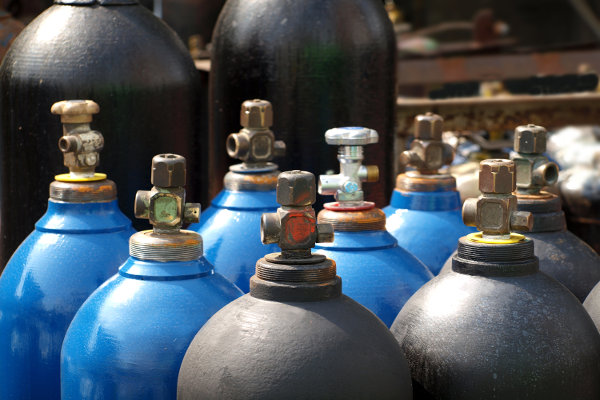Compressed Gas Cylinder Safety Part 1

We use compressed gases for a variety of tasks at our facility. We use compressed gases and the cylinders that store them for welding, powering industrial trucks and a variety of less common things. Many of us use them at home for fueling a grill.
The convenience of compressed gas doesn't come without a price though . . . we need to store, handle and use them properly or the consequences can be devastating.
Today we'll look at some tips for compressed gas cylinder storage.
- Store cylinders with their cylinder valves in the closed position;
- Securely attach cylinder valve caps;
- Separate cylinders according to their contents. Place oxygen cylinders at least 20 feet from any flammable gas cylinders or combustible materials; or by a noncombustible barrier at least five-feet high and with a fire-resistant rating of at least 30 minutes;
- Identify empty cylinders, and store empty cylinders separate from full cylinders;
- Secure all cylinders while in storage and in use;
- Ventilate all cylinder storage;
- Keep cylinder storage away from fire and potential electrical hazards;
- Ensure all cylinders are labeled to identify their contents. Do not trust the cylinder color code as identification method for cylinder content (Medical gas cylinders are to be color coded, but check the label to be certain.);
- Return any cylinder to the supplier if the label does not identify contents;
- Store acetylene cylinders upright;
- Avoid dropping or striking cylinders.
During our next session we'll look at transporting and working with these cylinders.
pete replied the topic: #634
your article tells us to store empty and full cylinders - of like gasses - separately. Can you explain why this is? This will require my employer to spend a significant amount to accomplish
